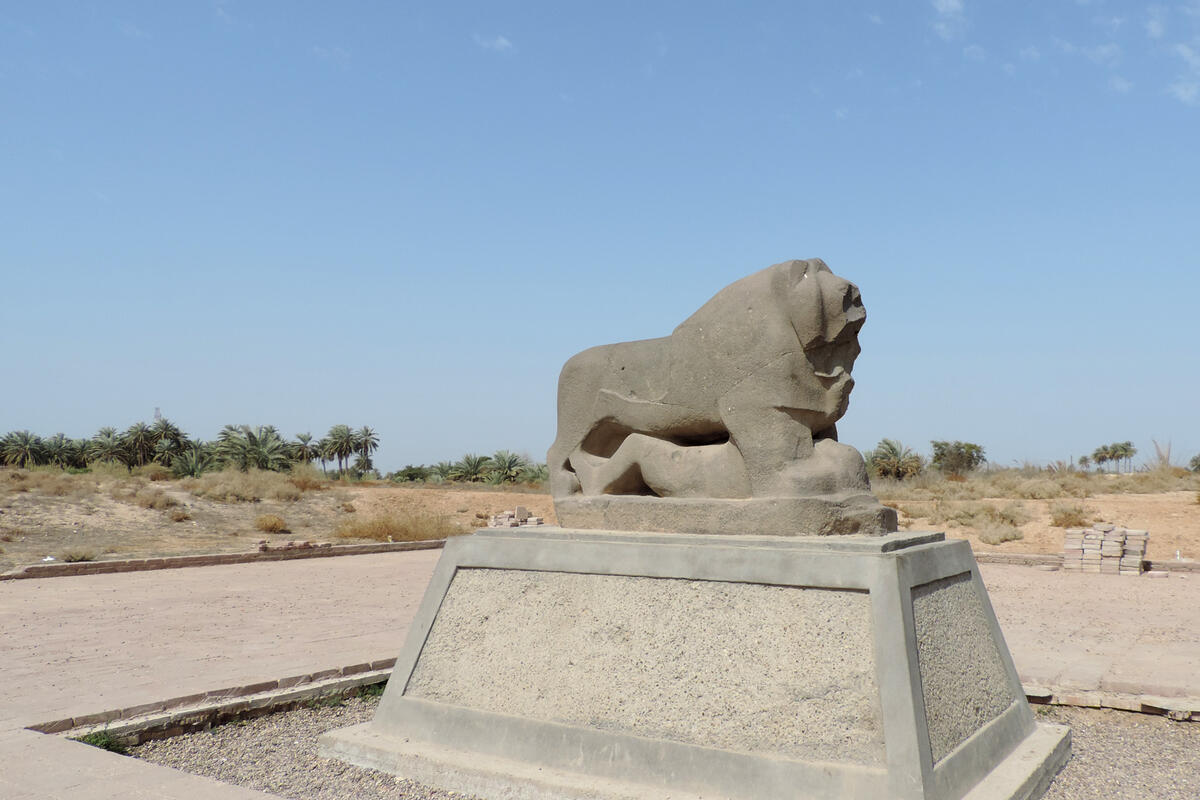DA1. Your Favorite Artwork¶
Statement¶
Choose and identify your favorite work of art. Your choice can be from any time and place and can challenge the traditional definitions of art. What visual qualities make this item your favorite? Include in your discussion, as appropriate, descriptions of the artist’s (or creator’s) use of formal elements such as line, shape, color, space, and other design elements. You may wish to include a link to an image of your chosen item (if available) to assist your classmates in their participation.
Answer¶
An artwork expresses the thoughts and feelings of its creator; Khan Academy (2023) suggests a common approach that can be used to analyze an artwork that includes the following aspects: Physical form, conservation, context, subject matter, function, visual analysis, and other aspects.
The Lion of Babylon Statue is one of my favorite artworks; the statue belongs to Babylon, Iraq which is a civilization I admire; it also features a lion, which is my favorite animal. The text below will do an art analysis of the Lion of Babylon statue according to the aspects mentioned above. The image below shows the Lion of Babylon statue (World Monuments Fund, 2022):

Physical Form: refers to the material that was used in building the sculptures. The Lion of Babylon statue is made of basalt, a volcanic rock that is common in the region (World Monuments Fund, 2022).
Conversation: refers to the techniques that are used to preserve the statues from environmental and human factors. The Lion of Babylon statue is partially damaged due to environmental factors and human activities, but the World Monuments Fund started a project in 2013 to conserve and restore the statue (World Monuments Fund, 2022).
Context: refers to the historical and cultural context in which the sculptures were created. The Lion of Babylon statue was created in the 6th century BCE and it may have been built by either Nebuchadnezzar II (605-562 BCE) or Hittites (World Monuments Fund, 2022).
Subject Matter: refers to the main characters or elements in the statues. The Lion of Babylon statue features a lion standing on a dead human while raising its head to the sky.
Function: refers to the intended purpose of the sculptures. The Lion of Babylon statue was created to guard the entrance of the city of Babylon; it was believed that it had a relationship with the goddess Ishtar (World Monuments Fund, 2022) which gave it a religious function; it was also used to show the almighty power of the Babylonian empire and to scare the enemies.
Composition: refers to how the sculptures are arranged and organized. The Lion in the statue has killed a man and is standing on its corpse; raising its head and looking for the next prey.
Scale: refers to the size of the sculptures. The statue is 2.6 meters long and 1.95 meters high (World Monuments Fund, 2022) which makes it a large statue serving the purpose of intimidating the enemies.
Color: refers to the colors used in the sculptures. The statue is made of basalt which gave its dark gray color.
References¶
- Khan Academy. (2023). Introduction to art historical analysis. Khanacademy.org. https://www.khanacademy.org/humanities/ap-art-history/start-here-apah/intro-art-history-apah/a/introduction-to-art-historical-analysis
- World Monuments Fund. (2022). The Lion of Babylon. World Monuments Fund. https://www.wmf.org/project/lion-babylon